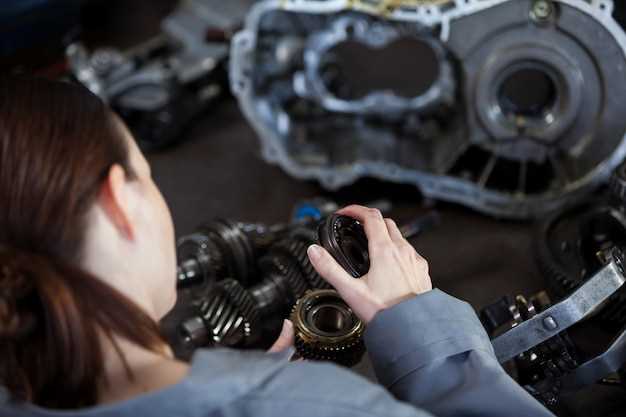
Choosing between a manual and an automatic transmission can significantly influence your driving experience. Each type of transmission comes with its own set of advantages and disadvantages, making it essential to consider your driving style, preferences, and needs. Understanding the fundamental differences can help you make an informed decision tailored to your lifestyle.
Manual transmissions offer drivers greater control over gear selection and engine performance. Enthusiasts often appreciate the hands-on experience that comes with shifting gears themselves, making driving more engaging and enjoyable. However, mastering a manual transmission requires practice and may not be suitable for everyone, especially in heavy traffic situations.
On the other hand, automatic transmissions provide convenience and ease of use, particularly for those who prioritize comfort and a more relaxed driving experience. With technology evolving rapidly, modern automatics are equipped with features that optimize fuel efficiency and acceleration, offering a seamless driving experience. Nonetheless, they can sometimes lack the connection to the vehicle that manual transmission drivers cherish.
Ultimately, the choice between manual and automatic transmissions hinges on your personal preferences and driving requirements. By examining the attributes of each option, you’ll be better positioned to determine which transmission aligns with your expectations and enhances your time behind the wheel.
Manual vs Automatic Transmissions: Which is Right for You?

Choosing the right transmission type for your vehicle is a crucial decision that can significantly affect your driving experience. Manual transmissions, often referred to as stick shifts, offer drivers greater control over gear selection and engine performance. This allows for a more engaging driving experience, especially in performance-oriented vehicles. Manual transmissions typically have lower initial costs and can provide better fuel efficiency in some situations, making them appealing to enthusiasts and those looking to save on expenses.
On the other hand, automatic transmissions have become increasingly popular due to their convenience and ease of use. Drivers do not need to engage in gear shifting, which can be particularly advantageous in heavy traffic or urban environments. Modern automatics often feature advanced technology, such as CVTs (continuously variable transmissions) and dual-clutch systems, which can improve fuel economy and deliver smooth power delivery.
Your choice between manual and automatic transmissions depends on your driving preferences and needs. If you prioritize control and enjoy an involved driving experience, a manual may be the right option for you. Conversely, if comfort and convenience are your main concerns, an automatic transmission could better suit your lifestyle. Consider your driving habits, the type of terrain you navigate, and how you value performance versus ease of use before making a decision.
Understanding the Benefits of Manual Transmissions for Enthusiasts

For automotive enthusiasts, manual transmissions represent a driving experience that goes beyond mere transportation. One of the primary benefits is the level of control offered to the driver. With a manual transmission, individuals can select gears based on their preferences, adapting to different driving conditions more effectively than an automatic system allows.
The tactile feedback provided by manual gear changes enhances the connection between the driver and the vehicle. This engagement fosters a sense of unity with the car, making every shift a deliberate act rather than a passive experience. For many, this added layer of involvement elevates the joy of driving.
Performance is another key advantage. Manuals generally allow for quicker acceleration when executed properly, as they enable drivers to optimize engine power and maintain higher RPMs. Enthusiasts who prioritize speed and agility often prefer manuals for this reason, as proper gear management can lead to better performance on winding roads or racetracks.
Moreover, fuel efficiency can be another benefit associated with manual transmissions. While this varies by model and driver habits, skilled manual drivers often achieve better fuel economy than their automatic counterparts, particularly in highway settings where overdrive gears can enhance mileage.
Additionally, maintenance costs can be lower for manual transmissions over time. They typically have fewer complex components compared to automatics, leading to reduced potential for costly repairs. This simplicity and reliability appeal to many who are passionate about maintaining their vehicles.
Finally, driving a manual transmission can foster a sense of accomplishment. Mastering the art of shifting gears provides a rewarding challenge that resonates with many enthusiasts. This skill not only enhances the driving experience but also builds confidence behind the wheel.
In summary, for automotive enthusiasts, the advantages of manual transmissions are abundant. From increased control and performance to potential cost savings and a rewarding driving experience, these transmissions offer a compelling option for those who cherish the thrill of driving.
Key Advantages of Automatic Transmissions for Everyday Drivers
Automatic transmissions offer several distinct advantages for everyday drivers, making them a popular choice over manual options. One of the primary benefits is ease of use. With automatic transmission, drivers can focus on the road without having to constantly shift gears, which is particularly advantageous in stop-and-go traffic or during long commutes.
Another significant advantage is improved fuel efficiency. Modern automatic systems are engineered to optimize gear shifts, allowing for better acceleration and reducing fuel consumption compared to traditional manual transmission. This efficiency can lead to cost savings over time, especially for those who drive frequently.
Additionally, automatic transmissions often come equipped with advanced technologies, such as adaptive shift logic. This feature learns the driver’s habits and adjusts gear changes accordingly, providing a smoother driving experience tailored to individual preferences. Such enhancements contribute to overall smoother performance, making them an attractive option for a wide range of drivers.
Moreover, safety is a crucial aspect for everyday drivers. With an automatic transmission, the driver has both hands free for steering, allowing for better control and reaction time in various driving conditions. This can be particularly beneficial in emergencies, where swift decision-making is required.
Finally, for those who are new to driving or less experienced, automatic transmissions reduce complexity and can make the learning process easier. The straightforward operation of an automatic car allows new drivers to gain confidence without the added pressure of mastering clutch control and gear shifting.
In summary, the advantages of automatic transmissions–ease of use, improved fuel efficiency, advanced technology, enhanced safety, and accessibility for new drivers–make them a compelling choice for everyday driving needs.
How to Choose the Right Transmission Based on Your Driving Habits
Choosing the right transmission is crucial to enhance your driving experience. Your daily habits and preferences can significantly influence this decision. Here are key considerations to help you select between manual and automatic transmissions:
- Driving Environment:
- If your routine involves heavy city traffic, an automatic transmission may be more suitable. It reduces the need for constant shifting and allows for a more relaxed drive.
- For frequent highway driving, both options are viable. However, a manual transmission can provide better control over gear selection, which enhances fuel efficiency.
- Driver Engagement:
- If you enjoy being actively involved in your driving experience, a manual transmission offers greater engagement and a sense of control.
- Conversely, if convenience is your priority, an automatic transmission offers a hassle-free experience, especially in stop-and-go situations.
- Maintenance and Reliability:
- Manual transmissions generally have simpler mechanisms and can be more reliable, with lower maintenance costs over time.
- Automatic transmissions can be more complex and may require expensive repairs, especially if appropriate maintenance is neglected.
- Fuel Efficiency:
- Traditionally, manual transmissions provide better fuel economy, as drivers can optimize gear shifts based on conditions.
- However, advancements in technology have improved the efficiency of automatic transmissions, making them comparable in many modern vehicles.
Ultimately, choosing between manual and automatic transmissions depends on assessing your driving habits and priorities. Consider how you drive, the environments you commonly navigate, and your level of comfort with control over the vehicle. Making an informed choice will lead to a more enjoyable driving experience.
